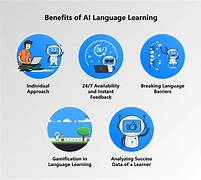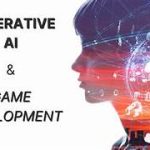AI Applications in Special Education for Tailored Learning
Education is a fundamental right, and its delivery should cater to the diverse needs of learners. For students with special needs, achieving this goal often requires customized approaches to teaching and learning. Artificial Intelligence (AI) has emerged as a transformative tool in special education, enabling tailored learning experiences that adapt to the unique challenges and abilities of each student. This article explores the applications, benefits, and ethical considerations of AI in special education, highlighting its potential to revolutionize the learning landscape.
Understanding Special Education and Its Challenges
Special education encompasses a broad spectrum of needs, including physical, cognitive, emotional, and developmental disabilities. Teachers and caregivers face significant challenges in addressing these needs, such as:
- Individualized Learning Plans (ILPs): Developing and implementing ILPs that cater to each student’s specific requirements.
- Resource Constraints: Limited access to specialized tools, trained educators, and support staff.
- Assessment and Progress Monitoring: Continuously evaluating a student’s progress and adjusting strategies accordingly.
- Engagement and Motivation: Ensuring students remain motivated and engaged despite their challenges.
AI-powered solutions are helping to overcome these hurdles by offering personalized, scalable, and efficient tools for educators and learners.
AI Applications in Special Education
1. Personalized Learning Plans
AI systems can analyze a student’s learning patterns, strengths, and weaknesses to create personalized learning plans. Machine learning algorithms adapt content delivery based on real-time feedback, ensuring that lessons align with a student’s pace and comprehension level. For example:
- Adaptive Learning Platforms: Tools like DreamBox and Smart Sparrow customize math and reading exercises for students with learning disabilities.
- Speech and Language Processing: AI applications like Lingraphica assist students with speech impairments by providing tailored language exercises.
2. Assistive Technologies
AI-driven assistive technologies are empowering students with disabilities to participate actively in the learning process:
- Speech Recognition: Tools like Google’s Live Transcribe provide real-time captions for students with hearing impairments.
- Text-to-Speech (TTS) and Speech-to-Text (STT): Applications such as Kurzweil 3000 convert written content into audio for visually impaired learners or convert spoken words into text for students with motor disabilities.
- Eye-Tracking Software: AI systems like Tobii Dynavox enable students with limited mobility to interact with computers using eye movements.
3. Behavioral and Emotional Support
AI can analyze behavioral patterns to identify triggers and provide interventions for students with emotional or behavioral challenges. For instance:
- Emotion Recognition Software: Tools like Affectiva detect changes in a student’s emotional state and alert educators to potential issues.
- Behavioral Analytics: AI platforms like ReThink provide insights into patterns of disruptive behavior and suggest strategies for management.
4. Virtual Tutors and Teaching Assistants
AI-powered virtual tutors offer one-on-one support to students, addressing gaps in understanding and reinforcing concepts:
- Chatbots: Virtual assistants like Carnegie Learning’s MATHia engage students in interactive problem-solving sessions.
- Interactive Learning Apps: Applications like ABCmouse adapt content delivery to suit learners with developmental delays, ensuring that they remain engaged.
5. Assessment and Progress Monitoring
AI streamlines the process of evaluating student performance and tracking progress:
- Automated Grading: Systems like Gradescope provide feedback on assignments, saving time for educators.
- Progress Analytics: AI dashboards compile data on a student’s achievements, offering insights that guide future instruction.
6. Collaboration and Communication
AI enhances communication between educators, parents, and students:
- Translation Tools: AI-powered translation apps like Microsoft Translator bridge language barriers, facilitating collaboration in multilingual settings.
- Parent Portals: AI-integrated platforms enable real-time updates on a child’s progress, fostering better involvement from caregivers.
Benefits of AI in Special Education
The integration of AI into special education offers numerous advantages:
- Inclusivity: AI tools make education accessible to students with diverse needs, reducing barriers to learning.
- Efficiency: Automation of repetitive tasks like grading and data analysis frees up time for educators to focus on individualized instruction.
- Engagement: Interactive and adaptive content keeps students motivated and invested in their learning journey.
- Scalability: AI solutions can be scaled to reach underserved communities, addressing resource constraints.
- Data-Driven Insights: Continuous data collection and analysis enable informed decision-making, improving educational outcomes.
Ethical Considerations and Challenges
While AI offers transformative potential, its implementation in special education must address several ethical and practical concerns:
1. Data Privacy and Security
AI systems require access to sensitive student data, raising concerns about confidentiality and data protection. Ensuring compliance with regulations like the General Data Protection Regulation (GDPR) and the Family Educational Rights and Privacy Act (FERPA) is crucial.
2. Bias in AI Algorithms
AI systems may inherit biases from their training data, leading to unequal treatment of students. Regular audits and the use of diverse datasets are essential to mitigate this risk.
3. Cost and Accessibility
The high cost of AI tools can limit their accessibility, particularly in underfunded schools. Partnerships between governments, tech companies, and non-profits can help bridge this gap.
4. Overreliance on Technology
While AI can augment human efforts, it should not replace the empathy and creativity of educators. Striking a balance between human interaction and AI-driven solutions is vital.
5. Training and Adoption
Educators and caregivers need training to effectively integrate AI tools into their teaching strategies. Resistance to change can hinder adoption, requiring targeted efforts to build trust and competence.
Future Directions
The future of AI in special education holds exciting possibilities:
- Advanced Natural Language Processing: Improvements in NLP could enhance communication tools for non-verbal students.
- AI-Powered Games: Educational games that adapt to a student’s progress and preferences can make learning more engaging.
- Predictive Analytics: AI systems could predict potential challenges, enabling early interventions.
- Collaboration Across Sectors: Increased collaboration between educators, researchers, and tech developers will drive innovation and address challenges.
Conclusion
AI applications in special education are transforming how we address the diverse needs of learners, offering tailored solutions that empower students and educators alike. From personalized learning plans to assistive technologies and behavioral support, AI is breaking down barriers and creating inclusive educational environments. However, realizing its full potential requires careful attention to ethical considerations, equitable access, and ongoing collaboration. By embracing AI with responsibility and foresight, we can ensure that every learner has the opportunity to succeed, regardless of their challenges.


